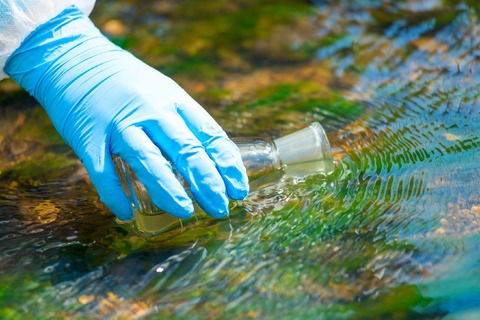Sensor offers new hope to counter ‘forever chemicals’ contamination
24 Jan 2024

New methods to combat the prevalence of per-and polyfluoroalkyl substances (PFAS) could provide a valuable tool for the water process sector.
Researchers from the University of Birmingham’s chemistry and environmental science joined forces with colleagues from the German Federal Institute for Materials Research and Testing, to detect the so-called ‘forever chemicals’ in water via luminescence.
The manufactured fluorine chemicals used in packaging, semiconductor production and car tyres are non-degradable and pose a particular toxic pollution problem in water sources.
Birmingham professor of environmental chemistry Stuart Harrad and professor of inorganic chemistry and photophysics Zoe Pikramenou, who co-led the sensor design of a new sensor, said that existing methods of measuring PFAS contaminants were difficult, time-consuming, and expensive.
Commented Harrad: “There is a clear and pressing need for a simple, rapid, cost-effective method for measuring PFAS in water samples onsite to aid containment and remediation, especially at (ultra)trace concentrations. But until now, it had proved incredibly difficult to do that.
“Being able to identify ‘forever chemicals’ in drinking water, or in the environment from industrial spills is crucial for our own health and the health of our planet.”
Their new sensor which specifically detects the perfluorooctanoic acid (PFOA) with the aid of luminescent metal complexes attached to the instrument surface. When dipped in contaminated water, changes in the luminescence signal given off by the metals indicate PFOA’s presence.
Pikramenou detailed: “The sensor works by using a small gold chip grafted with iridium metal complexes. UV light is then used to excite the iridium which gives off red light. When the gold chip is immersed in a sample polluted with the ‘forever chemical’, a change of the signal in the luminescence lifetime of the metal is observed to allow the presence of the ‘forever chemical’ at different concentrations to be detected.’
So far, says Pikramenou, the sensor has detected 220 micrograms of PFAS per litre of water – suitable for industrial wastewater, but not sufficiently sensitive yet for drinking water, which would require detection of “nanogram levels of PFAS”.
The Birmingham team’s Berlin-based colleagues were responsible for the assay development and dedicated analytics at the nanoscale.
In the process sectors including both manufacturing and wastewater management, the work is likely to be viewed with considerable interest, given the increased regulatory pressures on both sectors.
Said Pikramenou: “PFAS are used in industrial settings due to their useful properties for example in stain-proofing fabrics. But if not disposed of safely these chemicals pose a real danger to aquatic life, our health, and the broader environment.”
Click here to view the findings, published in Analytical Chemistry.
Pic: Elementar water testing

